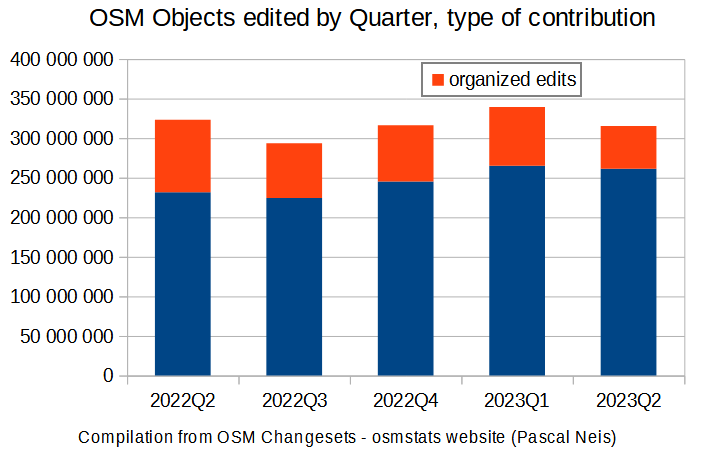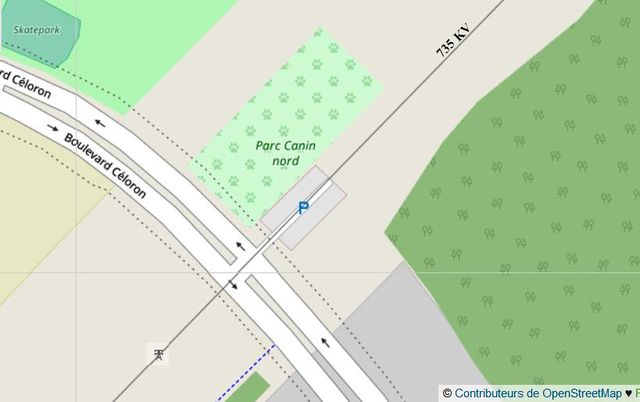Trend of OSM Objects Edited with focus on Organized editing
Posted by PierZen on 21 August 2023 in English. Last updated on 22 August 2023.Here is a brief analysis of trends in OSM edits and spatial distribution using compiled statistics from Pascal Neis osmstats website. The link at the bottom of the page will let you download the csv data (by month, quarter / country, region, continent) and make your own analysis.
Thanks to Pascal who provides such usefull infos about OSM activities. As Organized editing statistics have been added to the osmstas website at the beginning of 2022, we will cover the periods from 2022-04 to to 2023-06.
Trends by type of edition
As illustrated on graph 1, there was a small decline of OSM objects edited during this period from 323 millions objects edited in 2022-Q2 to 314 millions in 2023-Q2. This decline comes from the Organized editing with 92 millions objects edited in 2022-Q2 to 54 millions in 2023-Q2 (his share from 28% to 17%).
Graph 1


 Talking of the OSM Contributors, we often see the Big Numbers. In this Diary, my objective is to focus on the OSM Contributor profiles, to try to measure the impact of various groups on the OSM Edit Contributions.
Talking of the OSM Contributors, we often see the Big Numbers. In this Diary, my objective is to focus on the OSM Contributor profiles, to try to measure the impact of various groups on the OSM Edit Contributions.